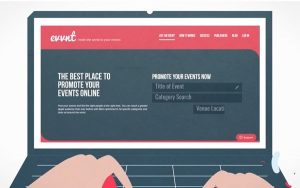
picjumbo_com / Pixabay
Maintaining growth is important at every stage, but particularly when entrepreneurs are first branching into their new venture. We look at 9 methods you can act on to encourage growth in your business.
1. Identify Market Need
It seems simple, but too often entrepreneurs become bogged down with the features of their product and forget to demonstrate how it satisfies a need in the market. Without realizing product-market fit, you won’t have a business for long.
A solution doesn’t have to use the most innovative technology that promises to revolutionize how we work: It can simply be taking a successful idea and improving on it. With startup success rates only 1 out of 4, with a common reason for failure being no market need, it’s particularly important that entrepreneurs recognize whether there is a market to consume the product, regardless of its perceived benefits.
2. Build Demand
During MVP and beta stages, it can be frustrating wanting to sell a solution that isn’t fully ready for the market, yet. Instead, see it as an opportunity to build pre-revenue demand.
Exclusivity is attractive, particularly when trying to stand out against incumbents or other startups. Have an invite-only list so that businesses aren’t wanting to be left out or only provide a limited run when you launch.
Develop a waiting list to maintain interest. This should contain regular newsletters about how development is progressing – there’s nothing worse than being left in the dark when waiting for a new product, and potential clients will always fear the worst if they aren’t updated.
3. Grow a Mailing List
Despite the wide range of ways we’ve developed to communicate (and market) online, email still remains the most effective form of marketing. In fact, email marketing generates $ 38 in ROI for every dollar spent. Growing a mailing list is therefore one of the most important growth hacks, and can begin to be grown almost from the get-go.
There are a number of actionable ways to grow a mailing list, including:
- Creating interesting and relevant industry content. Readers who follow your posts will sign up for email notifications so that they never miss an update.
- Putting on offers (such as a free trial or 10% off) for signing up for emails.
- Speaking on other platforms. Appearing in webinars, live conferences or guest articles are all ways of bringing your name to a new audience.
Once you have a healthy mailing list, you can begin sending out email drip campaigns.
4. Shareable Content
Content is important in establishing your brand as an expert in the field. For example, an entrepreneur developing a blockchain-based finance app would share content on the growing use of blockchain technology to demonstrate both the viability of their project and their own in-depth understanding of it. Readers who are interested in blockchain developments would then share the content with their own audience, who in turn perceive the company as reliable and knowledgeable in their field.
Make sharing your content easy. There should be links to share directly on the page for social media, blogging, and peer-to-peer, such as email or instant messaging.
Content doesn’t have to be long text-based articles. In fact, image-based posts on social media are much more popular than large chunks of text. An image could be something as simple as an infographic (objective, informative, and easily digested) or a catchy extract from a longer piece that encourages people to read on.
5. Go Big
Be confident in your own product. That’s not to say get carried away by grand promises that are unlikely to materialize, but instead, have genuine faith in how it will improve users’ lives and how the technology underpinning it will do so.
There’s no harm in getting a little extra help. Big retail brands are known for getting celebrities onboard to endorse their products, but if an A-list cameo is out of budget there are still ways to ride someone else’s celebrity. If you have previously worked with impressive clients, be sure to drop their logo on your website – the designs are much more eye-catching and recognizable than a list of names.
Similarly, if you’ve been featured in news stories, blogs, or had a featured press release, don’t be afraid to cite high-profile sites that have mentioned you.
Sponsoring is another way to bring your brand to the public’s attention, particularly at an event where you’re guaranteed a turnout from your prospective market, and integrating with other platforms (as Spotify did with Facebook or PayPal on eBay) is also a means of riding the popularity of an already established business to gain both credibility and an existing user-base.
6. Claim Your Work
You’re establishing your brand as dependable, and part of that is promoting yourself as a representative of the company. If you write for Quora or guest blog posts, make sure the articles are published under your name with a reference to where you work. Ensure you have a footer or signature on your personal and generic business email addresses, and never forget to include the logo.
Both your personal and company LinkedIn pages are places to showcase your work with videos and articles. Social media is a marketing page for you as a brand, so don’t waste it.
7. Outsource Your IT needs
Many entrepreneurs agonize over whether to create their software in-house or outsource it to another company. Working in-house seems to offer more control over the final product, but it offers a lot more drawbacks than advantages, including cost and the uncertainty of the hiring process.
Outsourced IT experts are on average cheaper than their US counterparts: the median cost per hour of a US mobile app developer, for example, is $ 150, whereas for highly-skilled developers in Eastern Europe, the hourly is closer to $ 50. Outsourced teams also have the advantage of being hired on a project-only basis: if you hire a new member of staff for the project, apart from the length of time it takes to recruit and integrate them into your team, they remain with the business indefinitely, even if the role is no longer completely necessary.
Outsourcing IT tasks means that your company can focus on running the business itself rather than being distracted by creating software. With the tools needed already in place and a wealth of experience behind them, outsourced software development is the safer option.
8. Incentives
Everyone loves an offer, and those that are only available for a limited time are particularly enticing. Early sign-up benefits mitigate the risk of dealing with a new company and pressure consumers into buying “before it’s too late.” Once the software has launched, you can still provide incentives for people to sign-up, such as bundle pricing, or a year’s subscription for the price of ten months, or perks like extra storage or credit when users refer a friend.
9. Social Reinforcement
Consumers can be wary of engaging with a new company and the actions of others can easily sway decision-making, which is why social reinforcement is so important. Case studies on your website offer potential customers the chance to know how other companies have been successful and what they can expect from the process. Shorter testimonials – preferably with photos, names, occupations, and where they work – are also effective in reassuring new clients.
Maintaining Growth
These growth hacks should naturally be used in conjunction with each other and can continue to be used as the business becomes fully-fledged to encourage a growth loop of sharing, recommendations, and new clients.
Business & Finance Articles on Business 2 Community
(28)
Report Post







